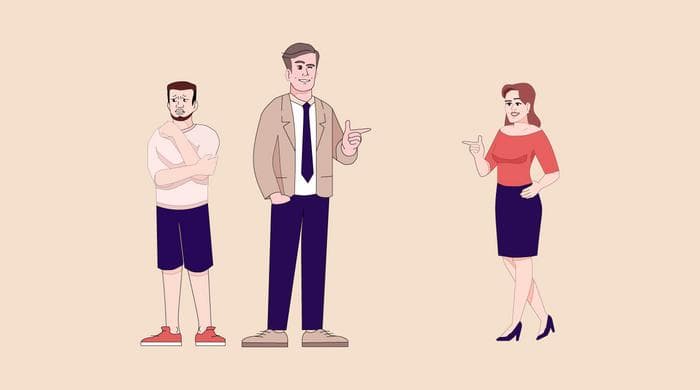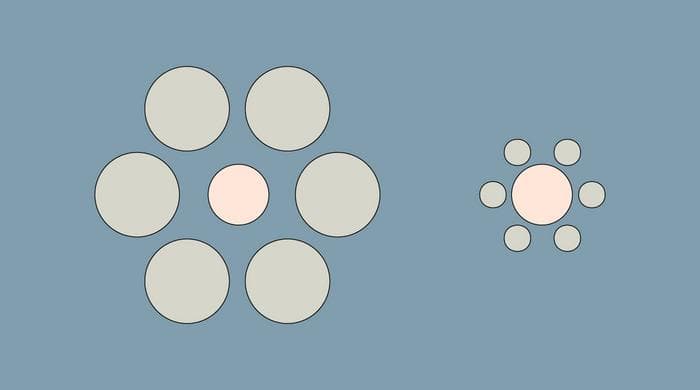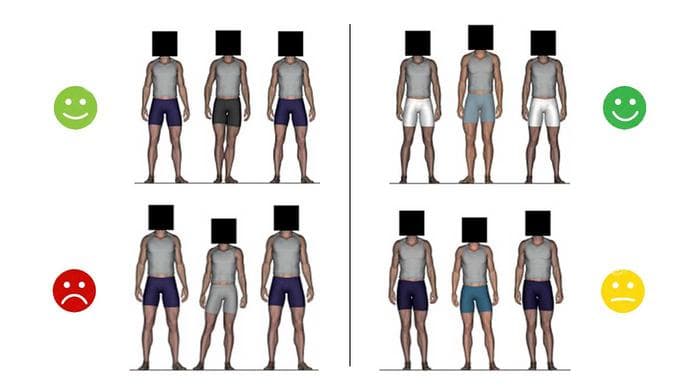Create situations when the comparison is in your favor

We compare neighboring objects relative to each other.

According to the Ebbinghaus illusion, the central circle on the right side of the top picture appears larger. This is one form of the contrast illusion.
Research confirms that a person will look better when compared to people who are approximately 10% shorter.1 In this case, height, attractiveness, and dominance are increased. People of the same height are also perceived well.
But if you find yourself nearby someone taller than you, the result will be the opposite. For example, if your height is 170 cm (5′7″), a partner who is 190 cm (6′3″) will draw people attention to themselves.

This effect is used on TV, where the main show host has a shorter co-host. The main host appears more attractive because of the shorter co-host.
Other examples of the contrast illusion:
- A face looks more attractive and dominant in the presence of less attractive and dominant faces.
- Body weight appears smaller next to a heavier person.
- In clothing with a large print and accessories, the body volume is also reduced.
- Muscles appear larger when a person nearby is shorter.
We often unconsciously surround ourselves with less competitive opponents during mating games, just like animals do.2 For example, male guppies swim with less colorful peers in the presence of females, and crabs swim with smaller ones. Similarly, we can increase our chances of success in a bar or nightclub by appearing with less attractive partners.
However, I wouldn’t rely entirely on this strategy when it comes to friendship. Taller friends often have more resources and can share them. In many situations, friendship is more advantageous. It is better to choose friends based on their qualities and character, not just based on appearance.
Moreover, contact with unattractive people can both strengthen self-esteem and reduce self-care, and vice versa.
-
Ludwig, Yannick S.; Pollet, Thomas V. (2014). When men appear smaller or larger than they really are: preliminary evidence that women are fooled by size illusions in attractiveness judgment tasks. Anthropological Review, 77(3), –. doi:10.2478/anre-2014-0023 ↩
-
Laura A. Kelley, Jennifer L. Kelley, Animal visual illusion and confusion: the importance of a perceptual perspective, Behavioral Ecology, Volume 25, Issue 3, May-June 2014, Pages 450–463, https://doi.org/10.1093/beheco/art118 ↩
Posted on
Last edited on
